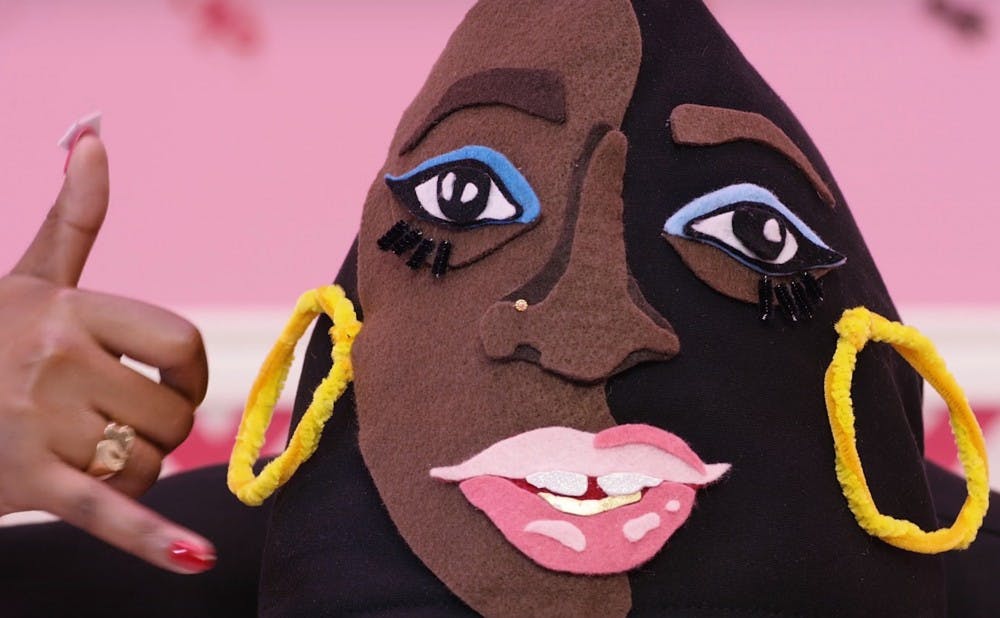This summer, hip-hop artists are dominating the charts, claiming more than half of the spots in the Top 10. Radio listeners can’t seem to catch a break from Cardi B’s “I Like It” or Drake’s hit “God’s Plan.” In the past five days, I’ve heard “I Like It” at least twice a day, and I admit, her line about the Balenciagas that resemble socks is especially catchy.
On a another note, Beyoncé and Jay Z released “APES**T” under the moniker the Carters. The legendary duo managed to book the Louvre Museum for their music video as they take us through their journey of conflict and reconciliation. The pair, along with a diverse cast of background dancers, created a powerful juxtaposition between them and the centuries-old European art that grace the walls of the museum. In a sense, it was a reckoning, as if to push aside the worn, dusted monarchs that have symbolized the oppression and subjugation of people of color, so as to make room for the new sovereigns. The song is a tribute to black excellence and makes for an apt celebration of Beyoncé’s personal success.
Of the chart toppers, including Cardi, Ella Mai, The Carters and the late and controversial XXXTentacion, Drake claims the most spots in the Top 10 — even the Top 20 — by far. In the midst of a dispute with Pusha-T and Kanye West, Drake managed to roll out another commercially successful album. Although “Scorpion” was never deemed groundbreaking by any means, his songs “Nice for What” “I’m Upset” and currently at number one, “In My Feelings” allow us a glimpse into Drake’s emotionally vulnerable side coupled with his drive and determination. The album isn’t the most polished or the most original, but it succeeds at reminding audiences why they fell for Drake’s energetic beats and smooth rhymes.
Taking a glance off of the charts for a moment, you will find rap and hip-hop artists with a taste for the experimental. The forceful beats on Rico Nasty’s most recent album “Nasty” redefine a power record with her authoritative presence and precise lyrics. Her album is dynamic, persuasive and has clear punk, pop and trap influences. Jpegmafia, an artist truly born of the internet age, couples fidgety electronic loops with politically charged rap, aiming at individuals within the Trump administration. Perhaps one of the most exciting yet puzzling albums so far is Tierra Whack’s “Whack World.”
“Whack World” is exactly 15 minutes long, comprised of tracks that are a minute each. The songs seem to overlap with each other, one song cutting short just to seamlessly transition to the next. Instead of releasing singles with an accompanying music video, Whack created a single music video for her entire album, with artful acid trip visuals and scene changes between each song depicting a differing personality.
The music video opens with the track “Black Nails,” her head bowed in a nail salon, the top of her hoodie presenting an abstract woman’s face as she interprets her lyrics with stylized nail art. When her head raises, she transitions to her second track “Bug’s Life.” The right side of her face is swollen, her eye is shut and her mouth droops to one side. Although the lyrics don’t necessarily point to potential abuse or injury, Whack leaves it up to viewers to interpret the placement of visuals with each track.
Whack’s album attempts to explore an alternative narrative within the rap and hip-hop subcultures — her music doesn’t brandish luxury and isn’t preoccupied with glamour. Although the genre has always sought to amplify the black experience, Whack incorporates that experience both lyrically and symbolically in her music video — from the swollen face, a scene where partygoers eat candies off of a black man’s body and her lying in a sequined coffin, Whack’s choices are deliberate and commanding.
Differences aside, hip-hop has been popular since the late ‘70s and early ‘80s, and by the end of 2017, surpassed rock as the most popular music genre in the United States. The genre is predominantly made up of black artists and finds its roots in the Bronx to serve African American communities, and to uplift and amplify black voices. Although it has traditionally been male-dominated and accused of perpetuating misogyny and rape culture in the past, rap and hip-hop have been taking strides in a new direction. Increasingly, female voices are being heard, and following in the tradition of hip-hop roots, music takes a stance against societal injustice. In a generation with a penchant for internet-centered activism, audiences are especially receptive to messages of empowerment.
Whether topping the charts or just beginning to emerge onto the scene, artists are continuing to bring attention to the suffering within the black community — the cycle of poverty that has endured for centuries as a result of systematic oppression, the hours of hard-work and effort that individuals within the black community must put in to only reach half the success within a system that was not designed to benefit them and the continued subjectivity to verbal and physical violence endured for simply being who they are — such things that non POC individuals cannot begin to fully understand. But, the music attempts to bridge that gap of understanding, uplift the power of black art and expression and hold individuals who wish to continue that hurt accountable.
Get The Chronicle straight to your inbox
Sign up for our weekly newsletter. Cancel at any time.

